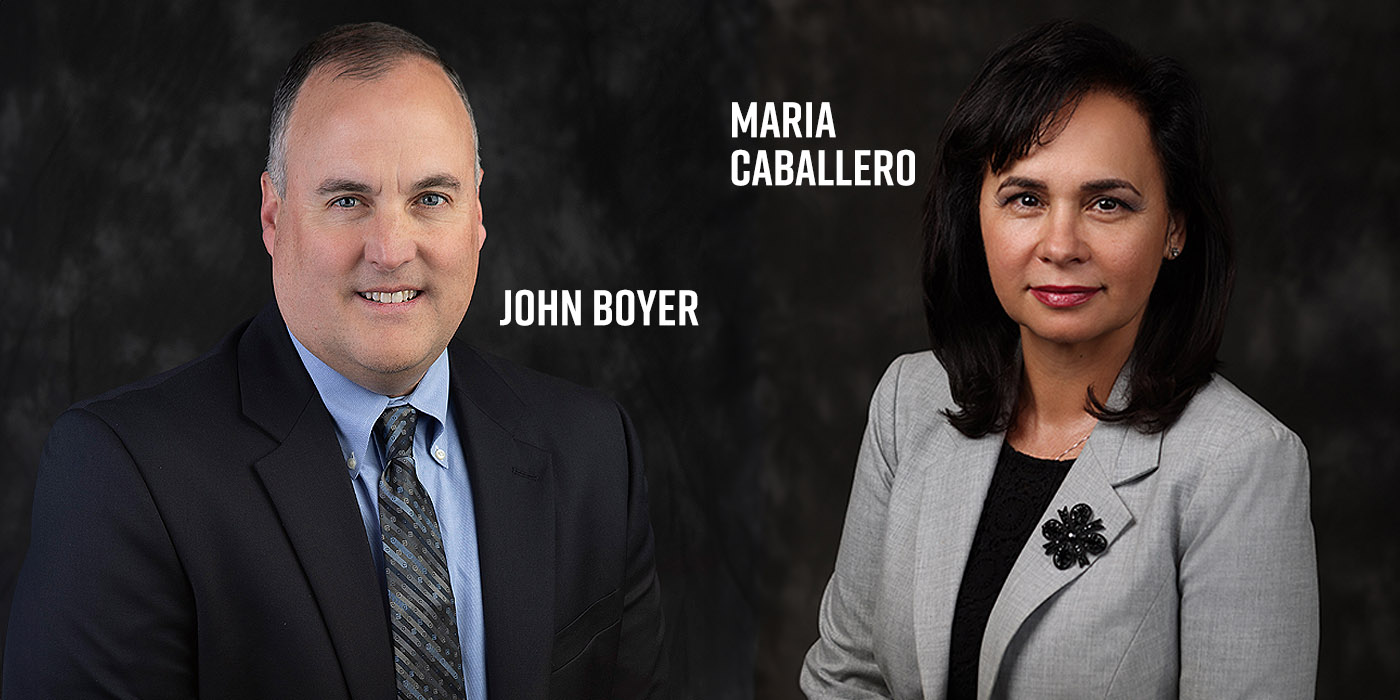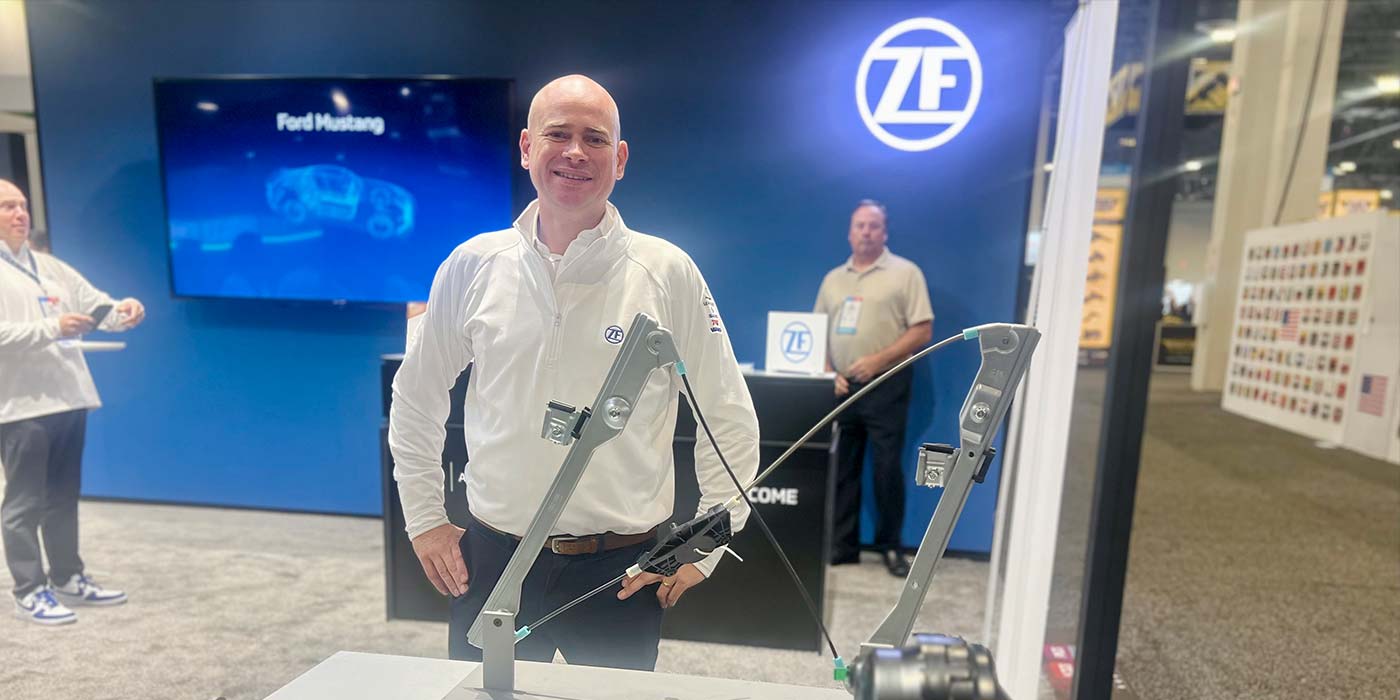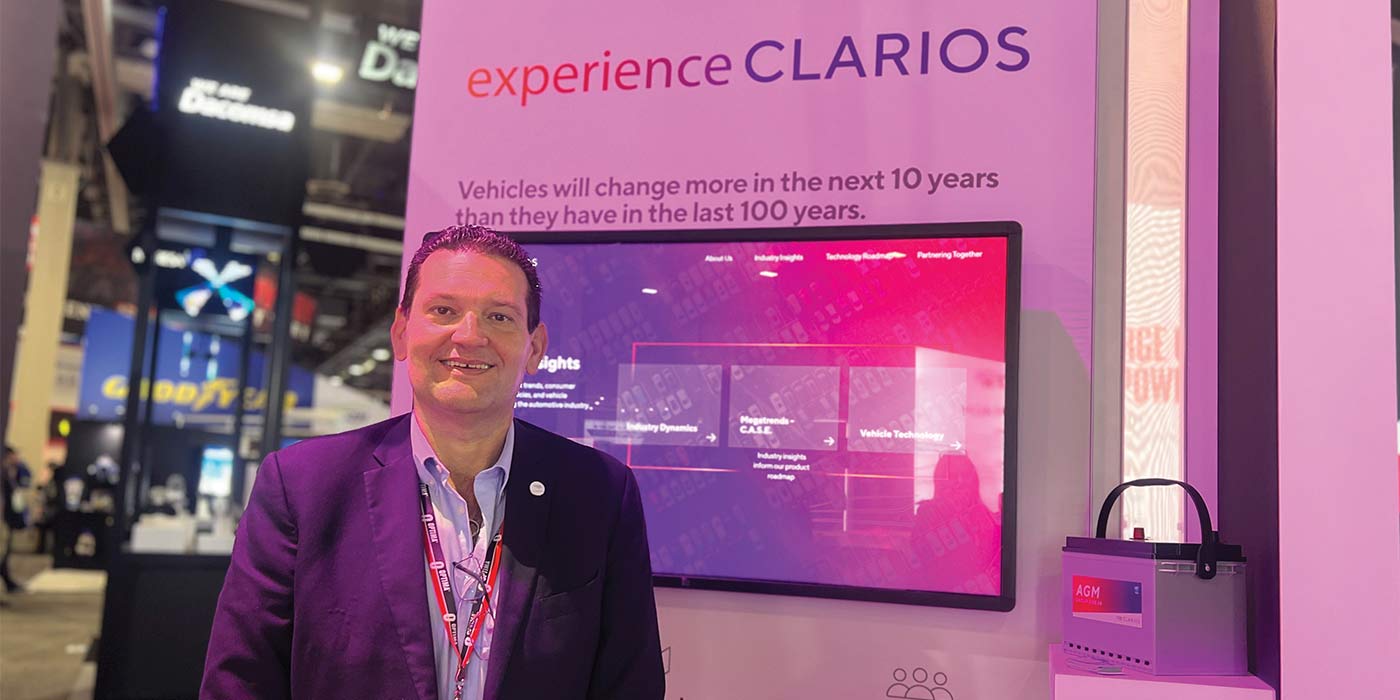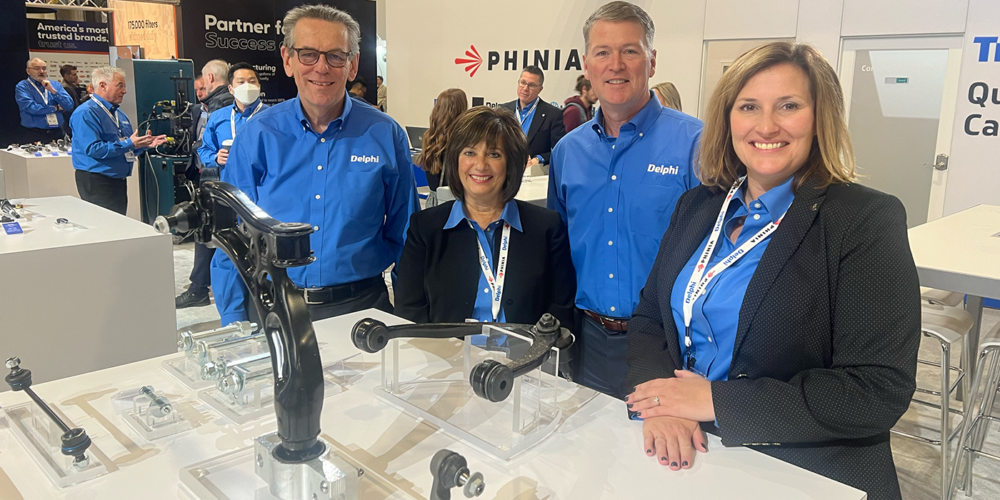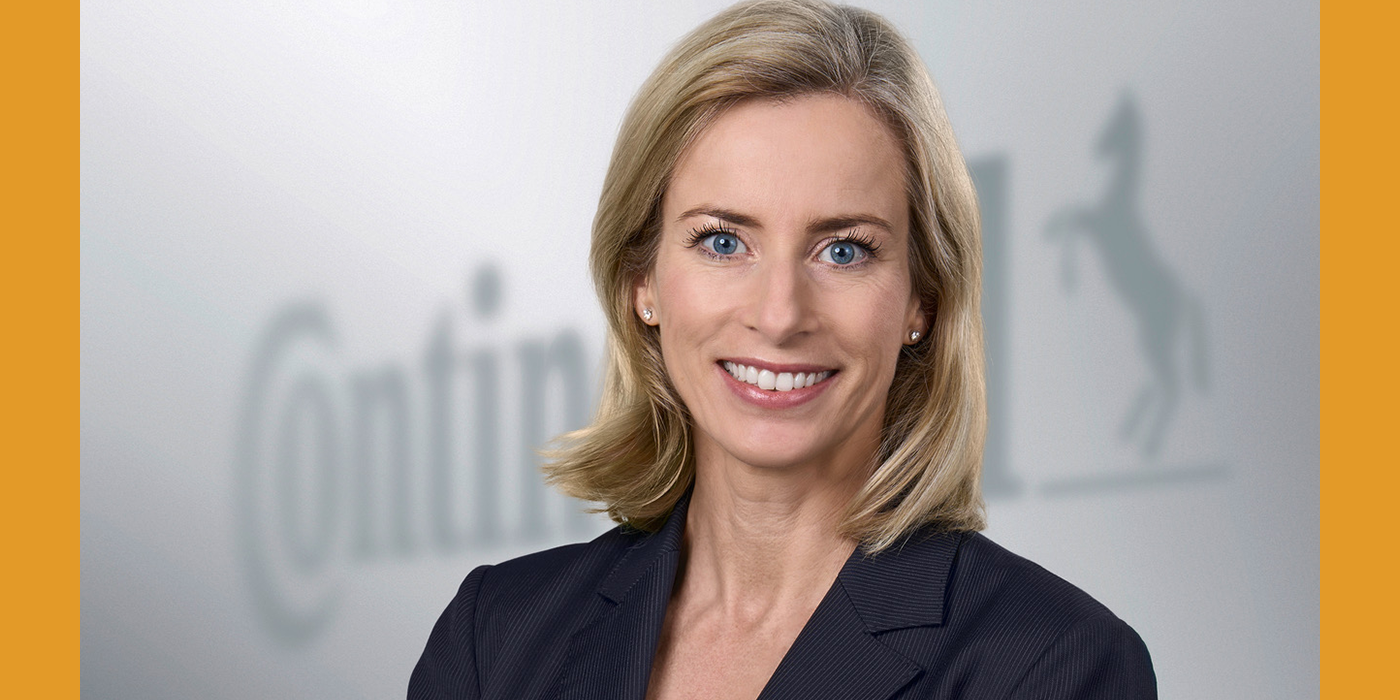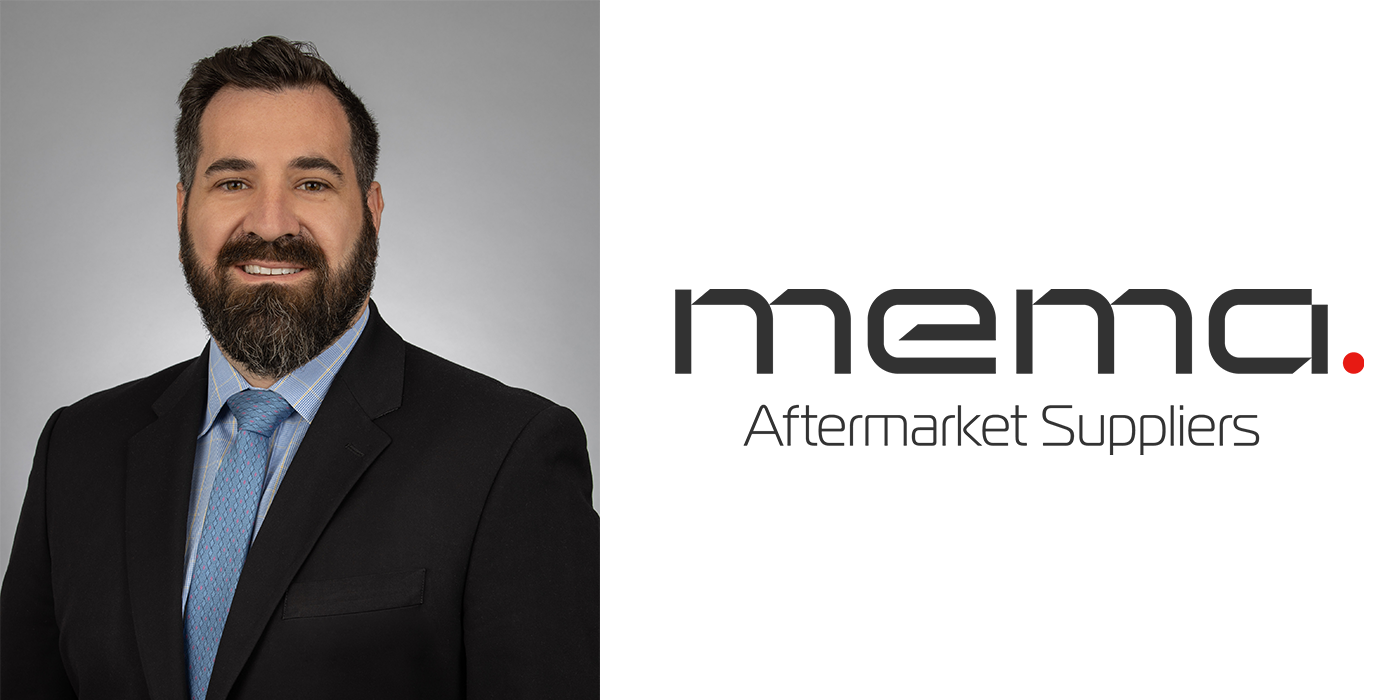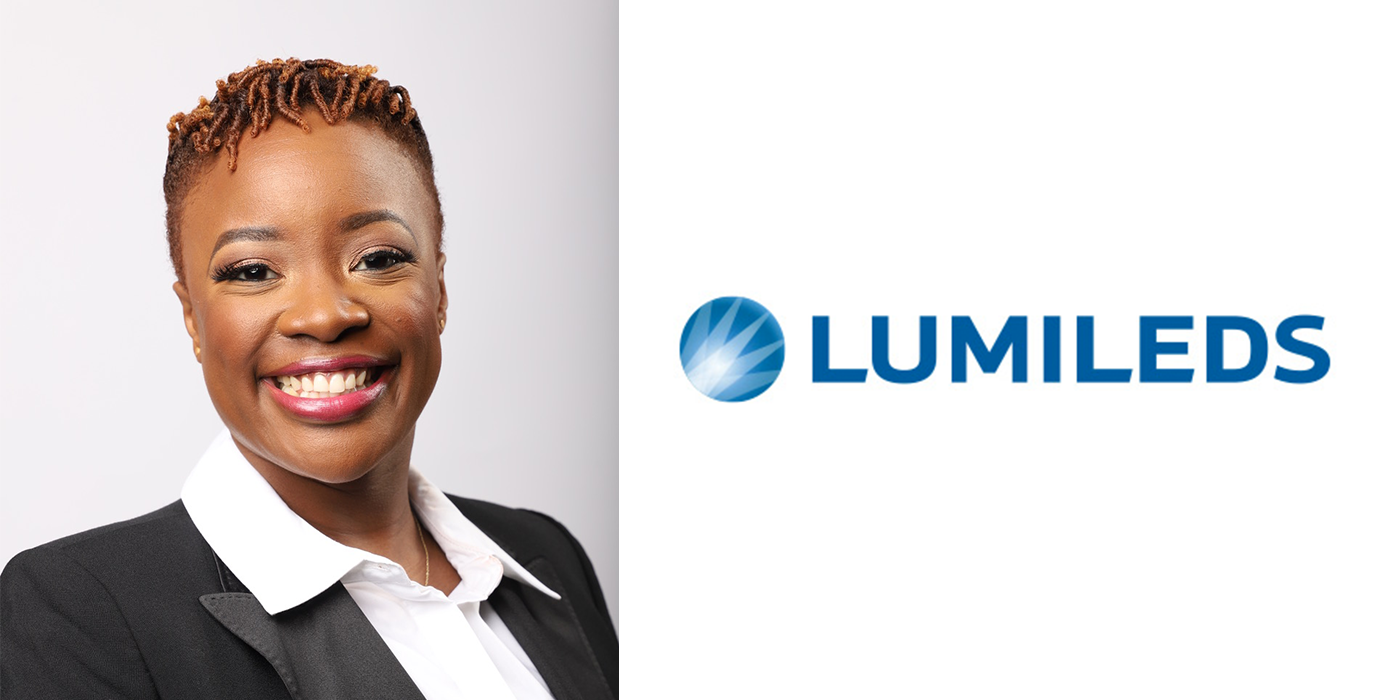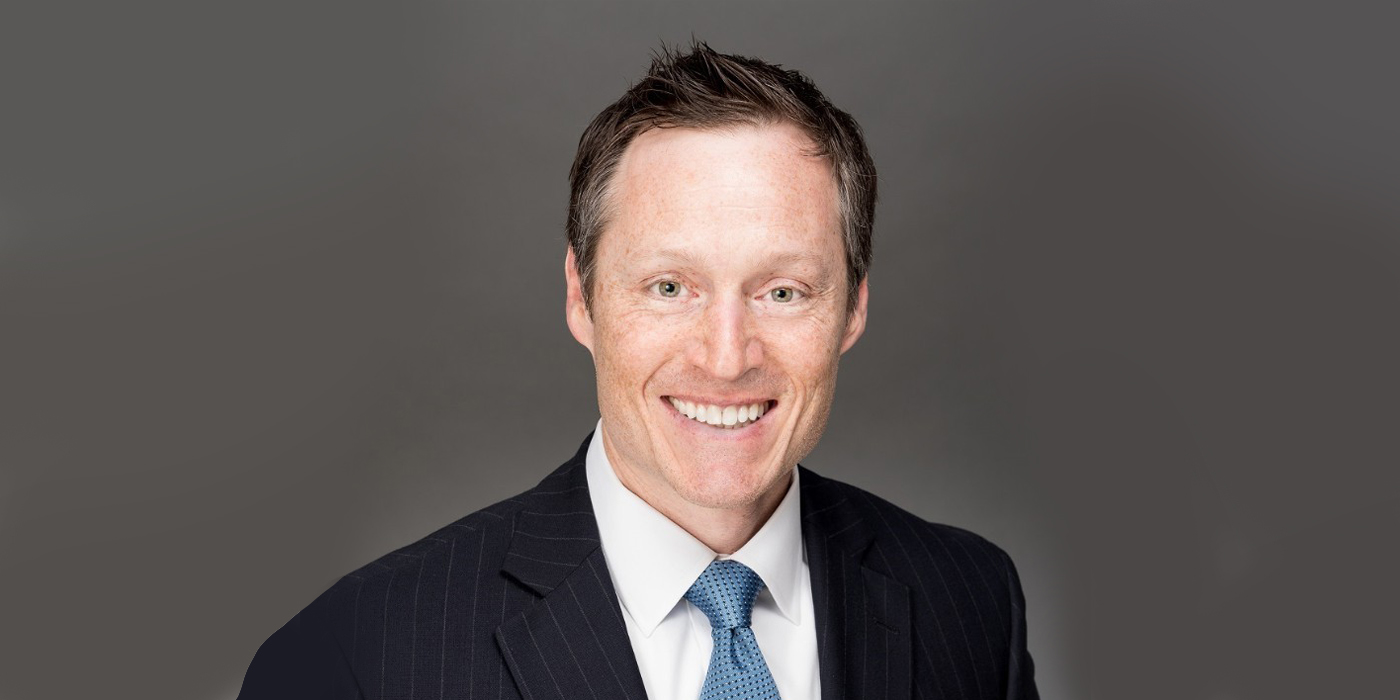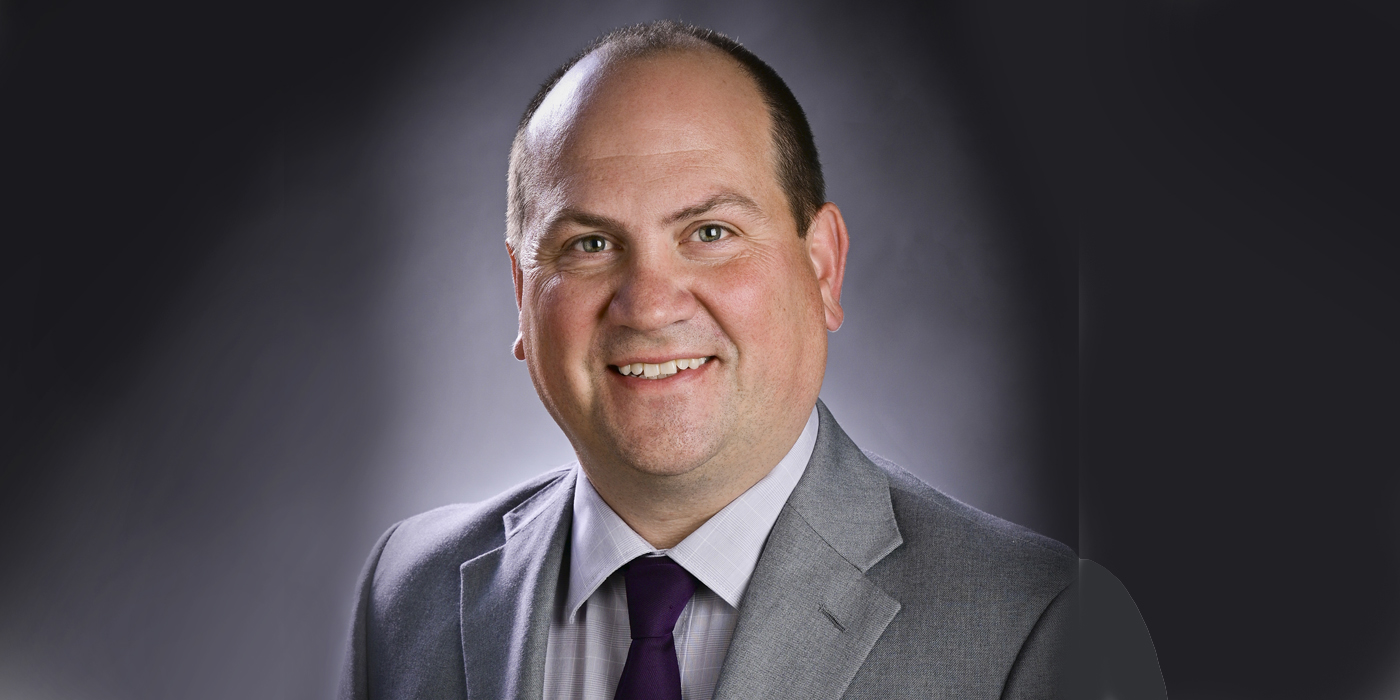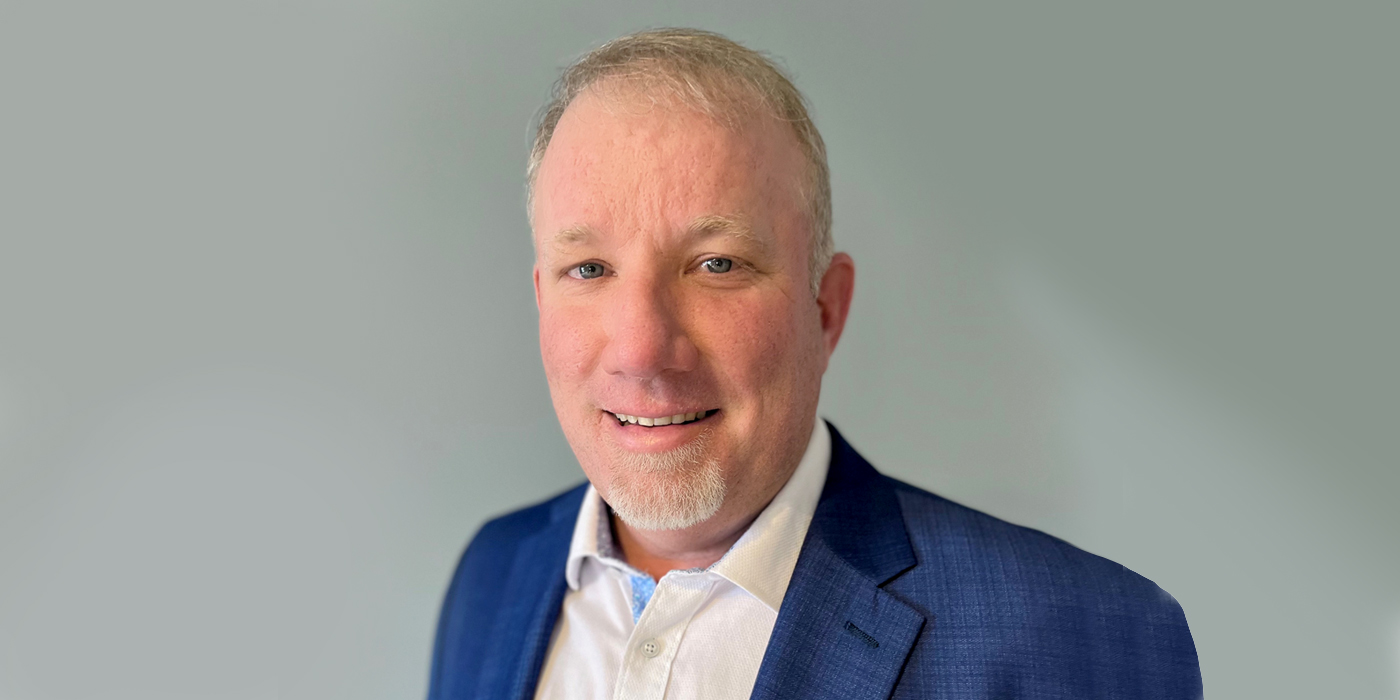RESEARCH TRIANGLE PARK, NC —

Every other week, aftermarketNews.com offers an interview with a high-profile individual in the automotive aftermarket. We give executives free rein to express their views on anything from the state of their corporations to recent legislative news to future trends in their niche markets. Here you see what matters to the newsmakers themselves.
Our latest edition of “Executive Interview” features Paul Foley, vice president of the Automotive Aftermarket Suppliers Association (AASA), a market segment of the Motor & Equipment Manufacturers Association (MEMA).
Foley joined MEMA in January 2001 as the association’s first vice president of aftermarket services and membership development. His duties were expanded in October 2002 to include serving as group executive of MEMA’s newly created division, the Automotive Aftermarket Supplies Association (AASA). AASA provides market intelligence and business services specifically tailored to the aftermarket.
Foley’s responsibilities also include coordinating membership development and retention initiatives with the Overseas Automotive Council (OAC), MEMA’s international aftermarket division; the Original Equipment Suppliers Association (OESA), MEMA’s Detroit-based affiliate; and the association’s peer/product groups. He also is in charge of MEMA’s research division.
Prior to joining MEMA, Foley served as general manager-replacement products for Goodyear Tire & Rubber Co., Lincoln, Neb. In his nearly 35-year career with Goodyear, Foley played a central role in expanding and managing Goodyear’s non-tire aftermarket business, including its global manufacturing, distribution and administrative facilities.
Join us as Foley brings us up to speed on the rapid growth of AASA since its creation two years ago, as well as several industry initiatives AASA is currently focusing on.
It’s been about two years since MEMA announced the formation of AASA. AASA has accomplished a lot in 24 months. How did you manage to form such a vocal, organized group in such a short amount of time?
The key was that there was definitely a need for the manufacturers in the aftermarket to have a common voice on issues specific to the automotive aftermarket. With that in mind, we approached top executives of some of our member companies regarding AASA and the response was overwhelming. Many agreed almost immediately to be charter board members. That commitment from key players in the industry really gave us the impetus to get this thing going.
Due to that industry need, AASA took off running. There had not been a single voice for the aftermarket up to this point. There had not been a group that organized programs and services specifically for the manufacturers, and to support their needs in the marketplace. AASA filled that void. There was such a consensus of opinion, it was relatively simple to be able to decide what programs and services to offer.
Since our first meeting at AAPEX 2002, we’ve shown a 25 percent growth in our membership. We have established ourselves in the marketplace. AASA now is a recognized brand name associated with the suppliers in the aftermarket.
We are a very member-driven and market-responsive organization. We listen to our members and the market, and establish programs to support growth and profitability in the aftermarket. Our first initiative was spearheading the industry-wide inventory management study which was executed by Northwood University’s Graduate School. We then began forming new programs including a Human Resources Council, a Forecast Council, a Small and Medium Manufacturers Council and our new Brand Protection Council. We’ve initiated a European Aftermarket Forum as well.
One of our current issues — and probably one of the most important ones — is a supply chain initiative, which we can talk more about later.
Why was it important for MEMA to create AASA?
Since 1904, MEMA has been the trade association for manufacturers in the automotive and heavy duty truck industries. It became obvious as the industry evolved over the years that each of the segments – the automotive OE and aftermarket, and the heavy duty OE and truck aftermarket – had different issues and concerns specific to the market segments. MEMA has represented the OE and aftermarket sides of both of these industries but the diverse and global market segments needed programs directed to their market segment issues – whether in government affairs, industry-specific issues, or programs and services.
By developing the three market segment associations, MEMA now represents OE suppliers through the Original Equipment Suppliers Association (OESA) in our Michigan office; heavy duty OE and aftermarket manufacturers through the Heavy Duty Manufacturers Association (HDMA); and automotive aftermarket manufacturers through AASA. These segments are supported by two commercial divisions: MEMA Financial Services Group and Management Information Systems Group.
Now, MEMA and its market segment associations are more focused and can provide for the needs of our members.
Speaking of AASA members, earlier this year you told us that your members were saying business is good. Are your members still reporting strong sales?
Well, it’s been a funny year. The first few months of the year sales were very strong, followed by a couple of slower months. July into August was a little softer, but year-to-date, almost every manufacturer is still reporting sizable increases. It’s good, much better than it’s been in the last eight to 10 years, but it has slowed down a little lately. I think some of that can be attributed to wet and cooler weather conditions and higher gasoline prices. While high gas prices haven’t caused consumers to cut back on driving, they have slowed their discretionary spending on repairs and spent that money on gasoline.
One of the things we do hear though is that margins are still hard pressed for the manufacturers. Even with the pick-up in business, there has still been a large margin erosion over the years. We still have a lot of work to do in that particular area.
Is the financial stability of suppliers a concern for AASA?
That is one of the main reasons why we started the supply chain initiative. We recently worked with the University of the Aftermarket to establish the first-ever manufacturing curriculum in the supply chain area because we feel that all of our manufacturers need to work diligently on cutting costs in the supply chain. We have our first program coming up on August 24-25 and then a follow-up program on Dec. 1-2. But that’s just the beginning. We plan to establish a full-curriculum program that we will expand in 2005.
In addition to that, we’ve also started other programs in the supply chain area. We’ve established a Forecast Council to help members understand how to forecast better. We’ve got a logistics program in the works to help members look at logistics, whether in distribution or actual shipping of product, to help trim costs. We’re also looking at the information technology, because standardization is needed, and many collaborative efforts which computer systems can facilitate. We think that these are just the start of some major programs to help our supplier members become more financially sound.
What are some other key issues that you and your members are dealing with now and into the future?
The supply chain initiative is probably the number one issue we’re working on now. We also are working diligently on the counterfeiting and brand protection areas in the aftermarket. This has become a major problem, particularly in China.
We had our first counterfeiting and intellectual property rights (IPR) seminar in October 2003, and more than 100 people attended. Our second counterfeiting seminar in April 2004 also was a success. In response, we have formed a Brand Protection Council, which now numbers 50 members.
This group shares best practices and networks to learn from actual business experience what is effective in brand protection efforts. The Council’s input assists AASA and MEMA focus on the important issues. We have the real life stories to take to government officials to pass legislation or regulations against counterfeiters and those who traffic in counterfeit goods. We will introduce a comprehensive Web site on counterfeiting and IPR soon which will be a valuable resource to the industry on this issue.
We were also asked by a number of our members to initiate an automotive aftermarket group in Europe, so we started a European Aftermarket Forum. The group currently has 32 members. The European service parts market was predominantly controlled by the OEs until recently. Now that the Block Exemption legislation, similar to our Right to Repair Act, has passed, the independent aftermarket can compete fairly against the OEs. With the opening of the European aftermarket, the aftermarket manufacturers found they needed a voice in the market. We’re helping them do that. We’re working with the European Association of Automotive Suppliers or CLEPA – the pan-European trade association – in collaborating with them to form this group and give the aftermarket a voice from a business and commercial side. CLEPA will handle the legislative side.
You mentioned Right to Repair. Do you want to address AASA’s stance on this topic for our readers?
AASA supports the Right to Repair issue – consumers should have freedom of choice over where their vehicle is serviced and the independent aftermarket needs the information and tools to service today’s vehicles. We also feel very strongly that the information is available. It’s out there, being made available by the car manufacturers. We are going to make sure that this gets communicated to the technicians, that they understand where they can go to get this information. For example, technicians can report problems through the NASTF Web site and a representative will get back to them with answers. We’re going to monitor that very closely. We are also going to post all of the product manufacturers’ tech lines on our Web site so that technicians have a one-stop resource to contact a supplier to get specific information.
We’re also working with the U.S. Environmental Protection Agency to help it set up a monitoring system – an independent third party that is going to monitor these Web sites to make sure that the information is consistent and easy to navigate. We’re also going to work with any group that will help promote the information to the technicians so that they can repair the vehicles and we can all sell more parts.
Along these same lines, for some time poor industry image was an issue that many in the aftermarket were previously very vocal about. It was a hot topic for a while but seems to have quieted down now. Is this still an issue for AASA?
It still is a major issue as far as we’re concerned. Unfortunately, the entire automotive industry does not have a very good name with the media and many consumers due to recalls, specific incidents with repairs, etc. Yet, our industry has done a tremendous job with such issues as fuel economy, high-tech products, reduced emissions, safety enhancement systems and the increased recyclability of products – all of which have made great progress over the last 15 to 20 years. We are promoting the true image of the industry. Our goal is to attract talented young people to our industry; remind the people who work in this industry to be proud of their contributions; and make the public aware of all the things which the industry has accomplished. This is not a low-tech industry. The automotive aftermarket is a very high-tech industry with brake-by-wire, steer-by-wire, computer modules, sensors … Today’s vehicles are very, very sophisticated. We need to promote our accomplishments to consumers and public officials.
In addition, we need people to be aware of the aftermarket’s importance and its contribution to the total economy and gross domestic product of North America. This industry is one of the major employers and one of the major drivers of the U.S. economy.
The other thing that I think is important is collaborative efforts among associations. We do not want to duplicate any effort. We want to support each other wherever feasible and necessary. There’s no sense in multiple trade associations working on the same issues.
Some examples of those collaborative efforts are the Automotive Aftermarket Products Expo in Las Vegas; PAACE Automechanika Mexico in Mexico City; Automechanika Frankfurt; the recent Aftermarket eForum, the AAIW/OAC reception during Automotive Aftermarket Industry Week; the European Aftermarket Forum where we’ve teamed up with CLEPA, the Global Automotive Aftermarket Symposium and its scholarship fund; the Be Car Care Aware campaign; and government affairs issues.
One important issue that we know AASA is very vocal about is counterfeiting. This year the group will hold its third counterfeiting seminar. Can you tell us more about the event?
We’ve had two seminars and formed the Brand Protection Council of MEMA. We are working very closely with the Immigration and Customs Enforcement Agency, which is the border and customs segment of the Department of Homeland Security. We are working with the Justice Department from an enforcement standpoint, to make sure the laws that are in place are enforced. We are working to raise congressional awareness of the issue so that stronger laws can be created with tougher consequences for people caught making, selling or distributing counterfeit products.
In addition to that we are going to see a lot of initiatives as a result of our first council meeting. We will launch a Web site soon that will have all of the counterfeiting presentations given at our first two seminars. The Web site also will feature solution providers, a message board, white papers, analysis, information about the civil and criminal penalties for trafficking counterfeit parts, and an e-mail address for questions. It will serve as a focal point for education and assistance for the entire industry.
The U.S. Immigration and Customs Enforcement (ICE) and National Intellectual Property Rights Coordination Center (IPR Center) are holding an Industry anti-counterfeiting meeting from 1:30-4:30 p.m. on Thursday, Sept. 9, at the Dearborn Inn in Dearborn, Mich. AASA is cooperating with ICE and the IPR Center in this effort and encourages all interested parties to attend this valuable meeting. There is no cost to attend. To attend, contact Desiree Wright, ICE intelligence research specialist, via e-mail, [email protected] or by telephone, 202-344-1904, no later than Tuesday, August 27. Space is limited and the reservations are on a first-come, first-served basis.
AASA made headlines recently with its latest market research findings that show a nearly $20 billion reduction in unperformed maintenance. Can you give us some details about this new figure?
Unperformed maintenance is derived from the difference between two market size estimates; maintenance interval and purchase incidence which comes from the replacement rates. It shows that people are becoming aware of preventative maintenance. It’s the first decrease that we’ve seen in some time. We are seeing some progress because the Be Car Care Aware campaign is working and people are starting to spend some money to repair their older vehicles. Another factor in the decrease may be consumers entering the cycle where they decided to repair an older vehicle rather than buy a new one.
The new car sales have actually been higher than expected. That means more cars are going into scrappage earlier than all of the experts predicted, which means that there are less cars on the road that actually need a lot of that maintenance. It takes some of that replacement factor out. It doesn’t mean that all of that $62 billion in unperformed maintenance that went down to $42 billion necessarily was replaced. It’s either replaced, scrapped or something happened in the marketplace. It’s still a huge number though that could be lowered. Forty billion dollars is a lot of business to the automotive aftermarket.
In 2003, AASA took over responsibility from MEMA in publishing the Automotive Aftermarket Status Report. Tell us about this project.
This is another major initiative on our part. As we focused in on the aftermarket when we started AASA, we found that very few of our members had a market research department anymore. Consolidations and cutbacks have moved that responsibility to the marketing department or product representative. In most cases, those people are not trained to be true market research people. So, we’ve taken the initiative and stepped in to serve as their market research arm.
Automotive Aftermarket Status Report is a NAFTA book covering Canada, Mexico and the United States. Every graph and chart included in this book has bullet points underneath it summarizing the data for quick reference. The third initiative is to continually get members’ input on what charts, graphs and statistics they want to see on a regular basis to use in their planning.
The other major part of our market research initiative is the replacement rates chart that we publish. This valuable tool allows a manufacturer to determine what size the market is for his products and what his company’s market share is.
Let’s talk about another valuable publication that AASA has created — the Top 100 Aftermarket Suppliers List. Why was this list created?
This goes back to the image campaign. The main reason that we started the list was that we were getting a tremendous amount of calls from analysts, bankers, universities and aftermarket schools interested in finding out who were the aftermarket’s major players. Automotive News publishes an annual directory of the top 150 OE suppliers on a global basis, but there’s never been an initiative in the aftermarket. So we started the first ever Top Aftermarket Suppliers List to help identify the players and bring credibility to the aftermarket.
It’s been a tremendous success. We get lots of requests for the publication before it comes out each year. It’s filling a big need and giving the aftermarket a much bigger name. Industry analysts find this publication particularly useful.
This, as we talked about before, is a big year for MEMA, as the association celebrates its 100-year anniversary. Any big plans for AAPEX?
We plan on capping our celebration at AAPEX this year. We’ll be hosting the annual AASA/MEMA Executive Reception on Monday, Nov. 2, to kick-off AAPEX. We will honor some of our members’ anniversaries and will most likely give out our Triangle Award. Then, in our booth, we will have a theme focused on our anniversary. We have some other exciting things planned. More on that to come!
To learn more about AASA, go to: www.aftermarketsuppliers.org.
_______________________________________
Click here to view the rest of today’s headlines.

